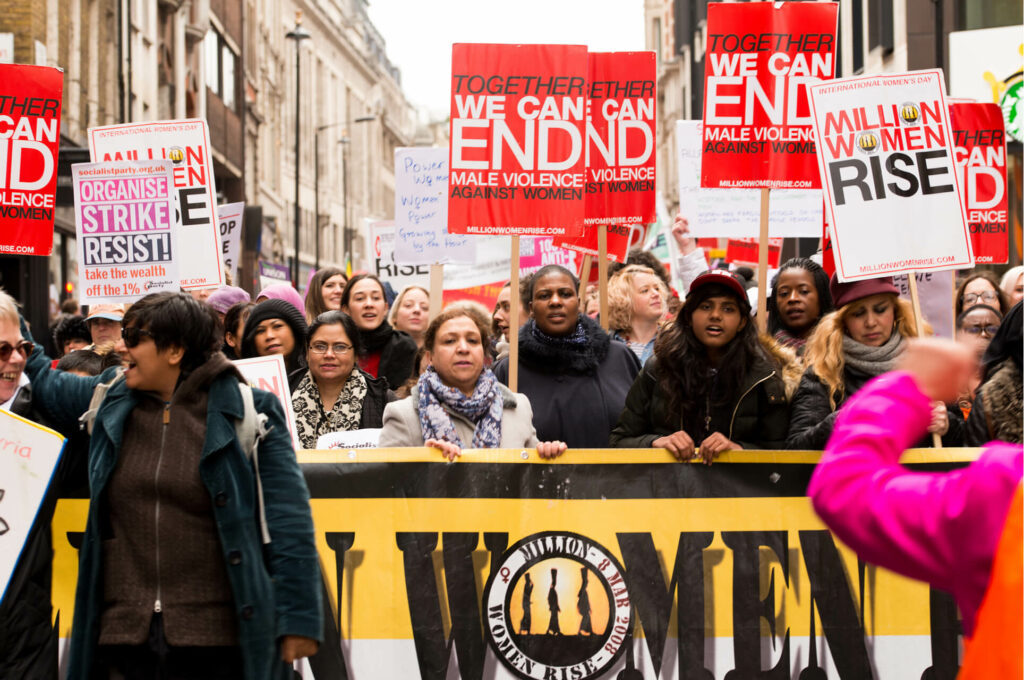When most of us think about Christmas, hopefully our heads are filled with pleasant images. The Christmas tree, presents, turkey dinner, spending time with our loved ones and so on. But it’s an unfortunate fact that, for many people in the United States and around the world, it’s completely the opposite. Christmas, for some, is a time of fear and dread, due to the marked increase in domestic abuse cases around this period.
THE WORRYING STATISTICS

No matter how pessimistic people may be about domestic violence in America, the statistics are still shockingly worse than most people would predict. The National Coalition Against Domestic Violence (NCADV) states that, on average, nearly 20 people per minute are physically abused by an intimate partner in the United States. During one year, this equates to more than 10 million women and men. On a typical day, there are more than 20,000 phone calls placed to domestic violence hotlines nationwide, with intimate partner violence accounting for 15% of all violent crime.
And although domestic violence is sometimes thought of as an issue that only affects women, this is not the case. In fact, the split is closer than many would predict, with 40% of abuse cases being against men. Children are also badly affected, even if they’re not the direct victims of violence. 1 in 15 children are exposed to intimate partner violence each year, and 90% of these children are eyewitnesses to this violence.
These statistics only worsen over the holiday period. On average, police interventions related to domestic violence rise by 20% in December, compared to other months of the year. The last year (2020) showed an even more worrying trend, with some states reporting a 50% increase in domestic violence incidents compared to 2019.
WHY DOES IT HAPPEN?
The mix of holiday stresses coupled with COVID19 lockdowns created a ‘perfect storm’ of increased risk factors in 2020, and many of these elements remain this year. For this reason, many authorities predict similarly high statistics this holiday season. So what are some of these risk factors?
- Alcohol abuse – the holiday season gives many people who already have substance abuse problems even more license to indulge. Substance use immediately precedes 47% of domestic assaults, and 92% of abusers had used substances at some point during the day of the assault.
- Time at home – working from home during lockdowns has forced many abusive partners to spend more time together. The holiday season also sees offices shutting down and people spending more time at home. This not only forces couples together, but removes some victims’ opportunity to get out of the home and seek help.
- Holiday stresses – some households face increased stresses over the holiday period, including the financial strain of Christmas, the pressure and stress of being around family, and the aforementioned increased alcohol or substance consumption.
- Putting on a ‘happy face’ – as the holiday period is supposed to be a happy time, many victims feel pressured to maintain this image no matter what is going on at home. Many victims of domestic abuse feel ashamed of their abuse, and this is heightened during what is supposed to be a time of relaxation and celebration. For this reason, many victims choose not to seek help during the holiday period in order to ‘keep up appearances.’
AN INTERNATIONAL PROBLEM

The increase in domestic violence during the holidays is not only a problem in the US. In fact, it seems to be a common issue in all countries that celebrate Christmas. The causes are the same, an increase in stresses, substance abuse and other risk factors. In the UK, calls to the national domestic violence helpline rise by 66% in December. One survey found that four in ten people polled were scared that the Christmas period would lead to the end of their marriage, and that around a third said that money was the chief cause of strain on their relationship.
Meanwhile, in Australia, the Christmas and New Year period has seen a 26.1% increase in police tasks related to family violence, and an 18.6% increase in the number of incidents involving children being exposed to domestic violence. The risk factors are also reportedly the same, including alcohol abuse, pressure and increased time with family.
LOOK FOR THE SIGNS AND SEEK HELP
Helping to stop domestic abuse is an issue where communities need to work together. For any number of reasons, victims don’t always come forward to seek help themselves. Communities should keep an eye out for possible signs of domestic abuse that may include:
- Hypersensitivity
- Verbal abuse
- Controlling behaviour
- Unrealistic expectations
- Isolation
- Blaming
- Threats of violence
- Use of force
If you, or anyone you know is suffering domestic abuse, or if you suspect that someone you know may need help, then please contact any local or national helpline.
(USA) National Domestic Violence Hotline – 1 800 799 SAFE (7233) or 1 800 787 3224 (TTY for Deaf/Hard of Hearing).
(UK) Refuge – 0808 2000 247.
(Australia) National Sexual Assauly, Domestic Family Violence Counselling Service – 1800 737 732.

